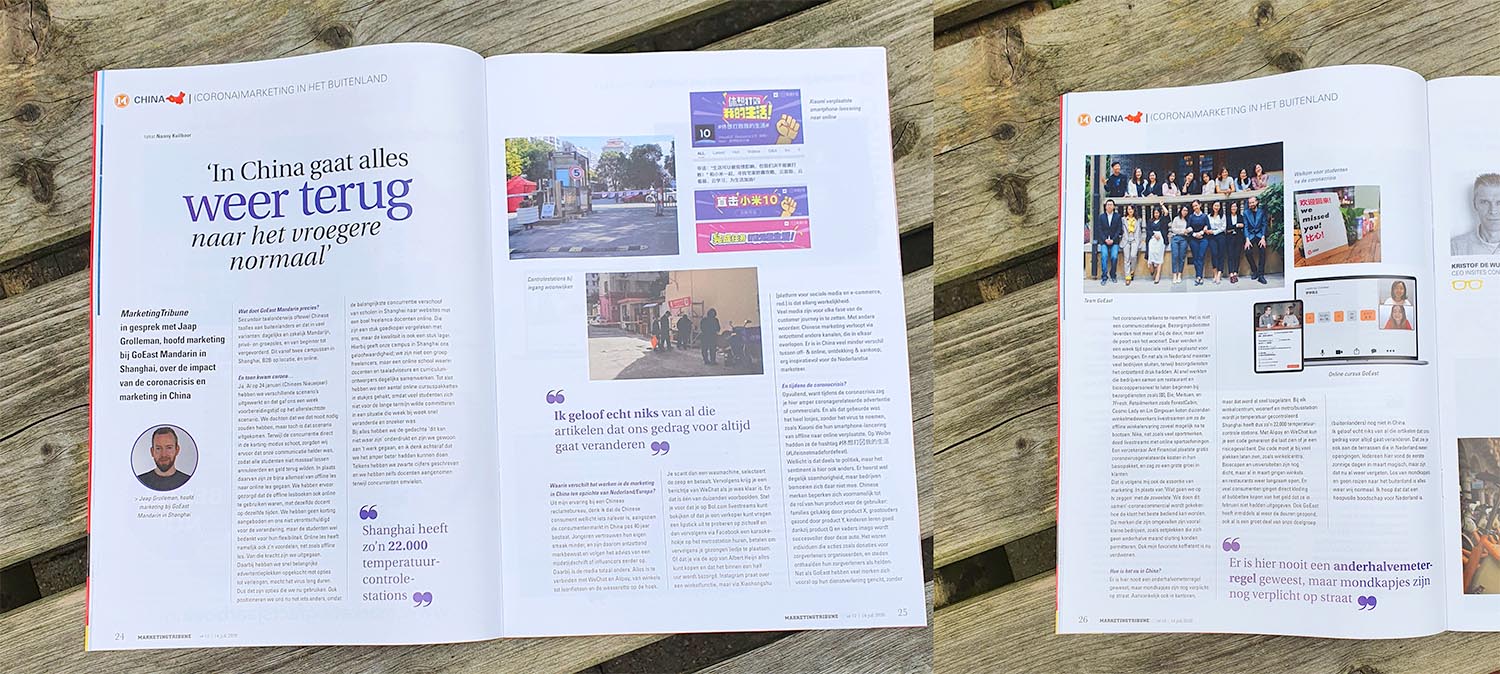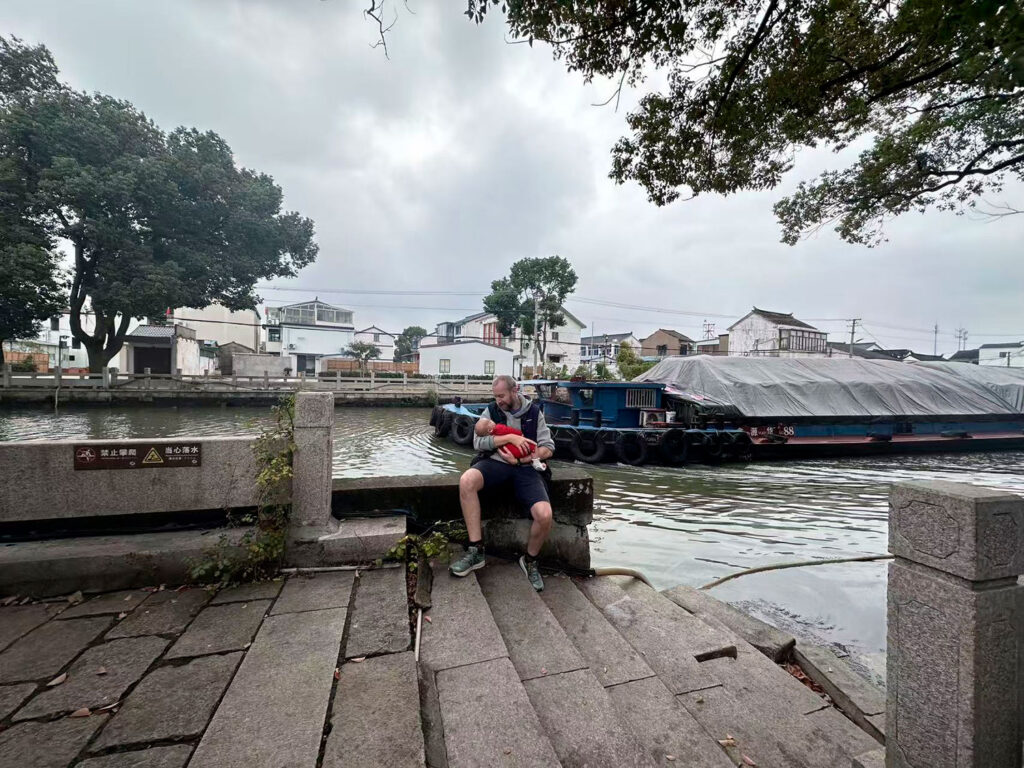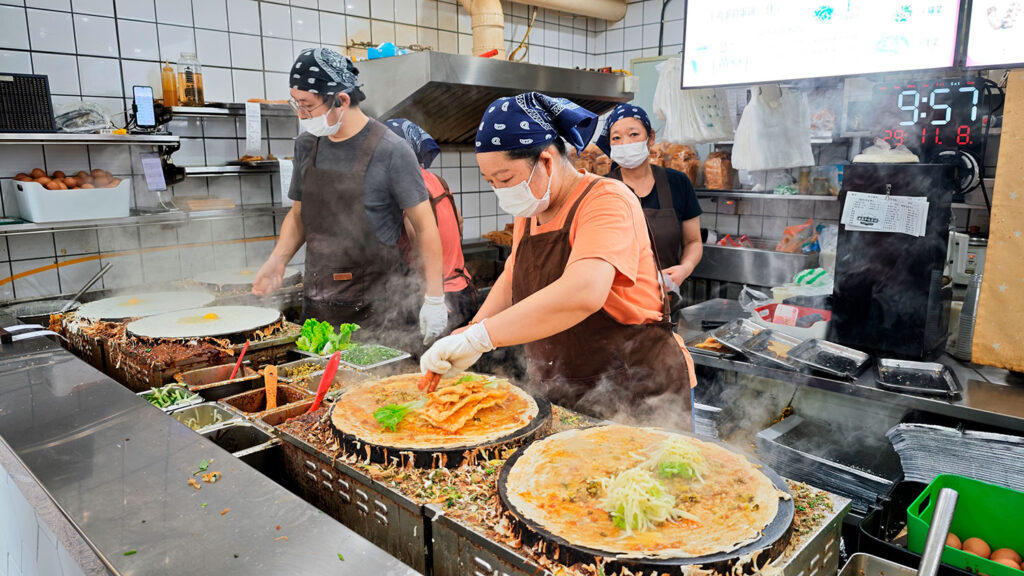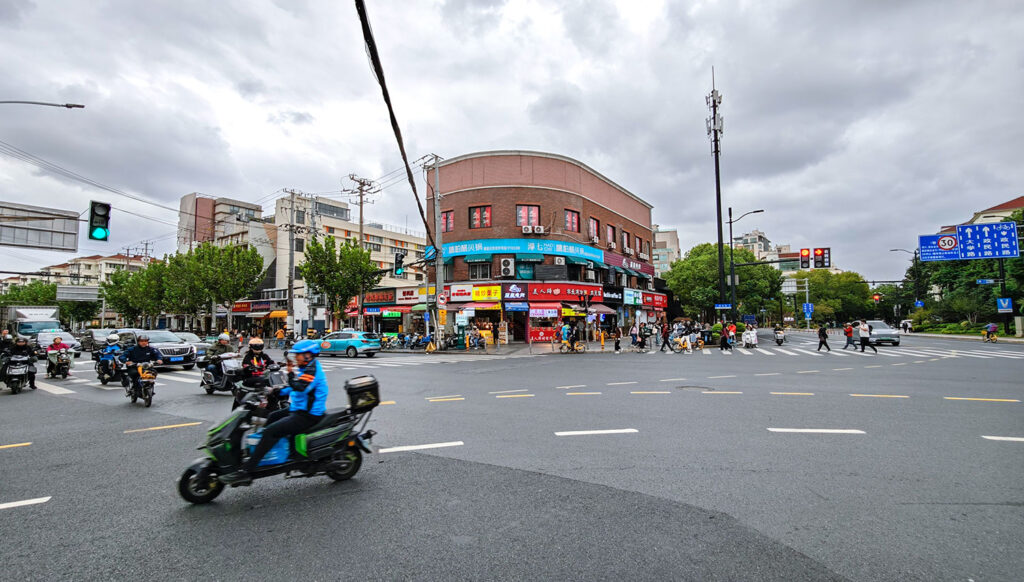(Original interview in Dutch with MarketingTribune.)
In conversation with MarketingTribune about our marketing and the impact of the corona crisis in China.
What exactly does GoEast Mandarin do?
GoEast Mandarin offers Chinese language lessons to foreigners in many variants: daily and business Mandarin, private and group lessons, from beginner to advanced. This from two campuses in Shanghai, B2B on location, and online.

And then came corona …
Yeah. Already on January 24 (Chinese New Year Eve) the whole seriousness dawned on us that this could turn out pretty bad. So we worked out various scenarios and that gave us a week of preparation time for the worst scenario. We thought we would never need that scenario: that the virus would actually hit Shanghai and that we’d have to close the schools, but that scenario has come true nonetheless. While the competition went straight into discounting, we made sure our communication was clear so that students didn’t cancel classes en masse and asked for refunds. Instead, almost all of them went from offline class to online class. We made sure that the offline textbooks could also be used online, with the same teacher at the same times, so students could keep learning interrupted. We didn’t offer a discount and didn’t apologize for the change, but we did of course thank our students for their flexibility. The thing is, online lessons also have their advantages, just like offline lessons. We used that strength, instead of making everything sound like an apology. I think that’s also in the interest of the student. Life goes on.
In addition, we quickly bought important online ad spots with options to extend, just in case the virus would last a long time. So those are options we are using now. We also positioned ourselves slightly differently, because the main competition shifted from schools in Shanghai to websites with a lot of freelance teachers online. They are a lot cheaper compared to us, but the quality is also a lot lower. Here our campus in Shanghai gives us credibility; we are not a group of freelancers, but an online school in which teachers and language advisers and curriculum designers work together on a daily basis. Finally, we sliced some online courses into smaller ones, because many students didn’t want to commit for the long term in a situation that changed rapidly week by week, and the future being highly uncertain.

In everything, we suppressed the thought “this can’t be true” and just went to work, and I think afterward we could hardly have done better. We even hired teachers while competitors had to fire them.
How does working in marketing in China differ from the Netherlands / Europe?
From my experience with a Chinese advertising agency, I think that the Chinese consumer are perhaps a little more naive or curious, since the consumer market in China has only existed for 40 years. This sounds like long but the impact is still there I think. Then there’s also the culture which is slightly different, and there are just so many people. So young people less trust their own taste, and are therefore extremely brand literate and actually follow the advice of a fashion magazine or influencers.
And the media in China is completely different. Everything can be connected to WeChat and Alipay, from shops to rental bikes and the corner laundry. You scan a washing machine, select the soap and pay — and you’ll then receive a message from WeChat when your laundry has finished. And that is one of thousands of examples.
Imagine being able to watch live streams on Bol.com or asking a salesperson to try out a lipstick on their own face. Or that you can rent a karaoke booth at the subway station via Facebook, then use Facebook to pay, and also to post the songs you just sang. — Or that you can buy everything via the Albert Heijn app and that it is delivered within half an hour. Instagram talks about a shopping function, but via Xiaohongshu [social media and e-commerce platform] this has been a reality for years.
Many media can be used for every phase of the customer journey. So I think in China there is much less difference between off- & online, discovery & purchase; very inspiring for the Dutch marketer.
And during the corona crisis?
 Well surprisingly, during the corona crisis (I think we can say the ‘crisis’ part in China is over now), you hardly saw any corona-related advertisements or commercials here. And when that happened it was very loosely, without mentioning the virus, like Xiaomi moving their smartphone launch from offline to online. On Weibo they had the hashtag # 休想 打败 我 的 生活 (#Lifeisnotmadefordefeat).
Well surprisingly, during the corona crisis (I think we can say the ‘crisis’ part in China is over now), you hardly saw any corona-related advertisements or commercials here. And when that happened it was very loosely, without mentioning the virus, like Xiaomi moving their smartphone launch from offline to online. On Weibo they had the hashtag # 休想 打败 我 的 生活 (#Lifeisnotmadefordefeat).
Perhaps that is partly too political, but the sentiment here is also different. There was certainly solidarity, more I guess in Western countries, but companies don’t interfere with it. Chinese brands are mainly positioned to the role of their product for the user: families happy through product X, grandparents healthy through product Y, children learn well thanks to product Q and father’s image becomes more successful with this car. It was individuals who organized actions such as donations to health care providers, and cities welcomed their health care providers as heroes.
Like GoEast, many brands mainly focused on their services, without mentioning the whole virus. It’s not a communication veneer. Delivery services no longer delivered to the door, but to the gates of the residential areas. Within a week, special racks were placed there for delivery. And just like in the Netherlands, many companies had to close, while delivery services were extremely busy. Soon, those companies worked together to get restaurant and cinema staff to start with delivery services like 盒 马, Ele, Meituan, and 7Fresh. — Retail brands such as ForestCabin, Cosmo Lady and Lin Qingxuan let thousands of store employees live stream to recreate the offline shopping experience as much as possible. And Nike, like many sports brands, did live streams with online sports exercises. Insurance company Ant Financial placed free coronavirus-related costs in their basic package, and saw significant growth in customers.
I think that is also the essence of marketing. Instead of ‘What are we going to say on TV’ with the umpteenth ‘We are doing this together’ corona commercial, they’re looking at how best to serve the customer.
The brands that have fallen are mainly small companies, such as dining places that couldn’t afford a month and a half closure. My favorite coffee place has now also disappeared.
How is it now in China?
There was never a 1,5-meter rule here, but face masks are still mandatory on the street. Initially also in offices, but that was soon released.
Your temperature is checked at every shopping center, residential area and metro / bus station. Shanghai therefore has about 22,000 temperature control stations. With Alipay and WeChat, you can generate a code that shows whether you are a risk case. You have to show this code in many places, such as shopping centers.
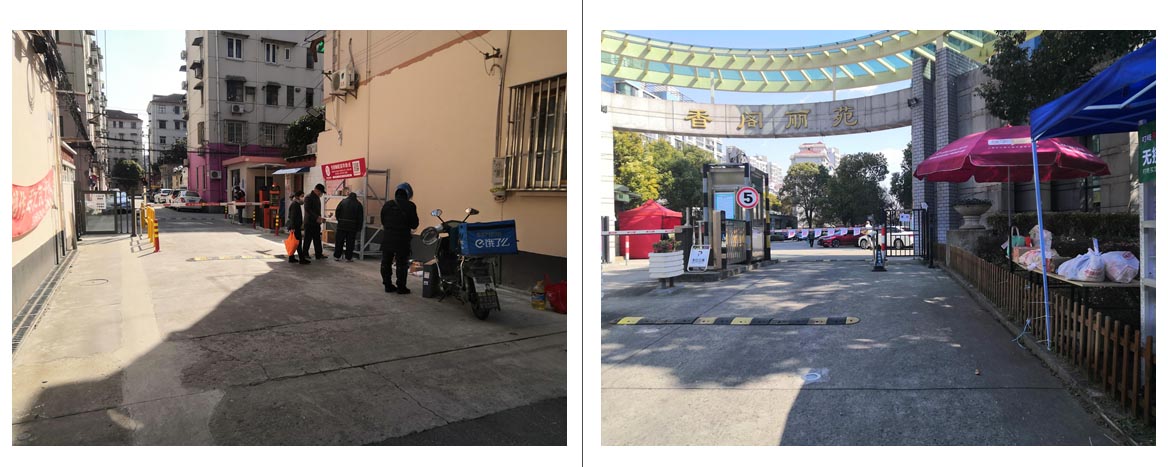
Cinemas and universities are still closed, but shops and restaurants slowly opened again in March. And many consumers immediately went to buy clothes or bubble tea from the money they had not spent in February. GoEast has already opened its doors again, even though a large part of our target group (foreigners) are not yet in China and cannot get back because the borders are closed to foreigners, even if they hold a valid visa.
I really don’t believe any of those articles that say our behavior will change forever. You can also see that in the terraces that reopened in the Netherlands. Everyone here thought the first sunny days in March were magical, but have already forgotten that. Apart from face masks and no traveling abroad, everything is back to normal. I hope that is also a hopeful message for the rest of the world.
